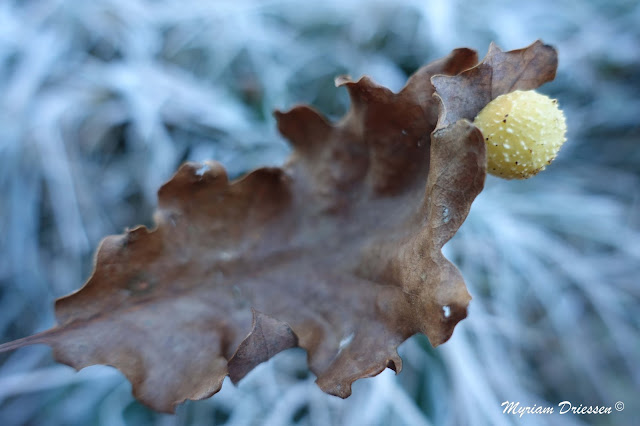
Long time ago, I
used to accompany my father in the woods. He worked for the French State Forests
Department. He taught me all he knew about trees, birds, stars… He stressed the
importance of biodiversity and sustainable development.
I enjoyed asking
him the name of every plants and animals on our path. One day I found a small
ball on an oak leaf. He explained that this was due to a parasite but was not
putting the life of the tree in danger. However I was impressed by the name he
put on this: oak gall.
Galls or cecidia are a kind of swelling growth
on the external tissues of plants or animals. Plant galls are abnormal
outgrowths of plant tissues, similar to benign tumors.
They can be caused by various parasites, from fungi and bacteria, to insects
and mites.
Plant galls are often highly
organized structures and because of this the cause of the gall can often be
determined without the actual agent being identified. On the picture above, the
parasite is the gall wasp,
also called gallflie (Cynipidae): Cynips quercusfolii.
Many parts of
the tree can develop a gall of very diverse shapes depending on the parasite
species and the season. Here on a small branch the parasite is Andricus kollari:
Inside the gall,
the larva will be protected and find food during its development. But the gall
is also a form of protection for the tree as it insulates the parasite.
If opened, the
larva is to be found in the middle of the gall:
Some Cynipidae
have two generations every year and two different galls like Neuroterus quercusbaccarum on white oak or Plagiotrochus quercusilicis on Kermes oak.
Other trees can
have galls, namely beech, lime tree, elm, dog-rose and maple, like this one,
largely infected:
More trees of the Sant valley



Aucun commentaire:
Enregistrer un commentaire